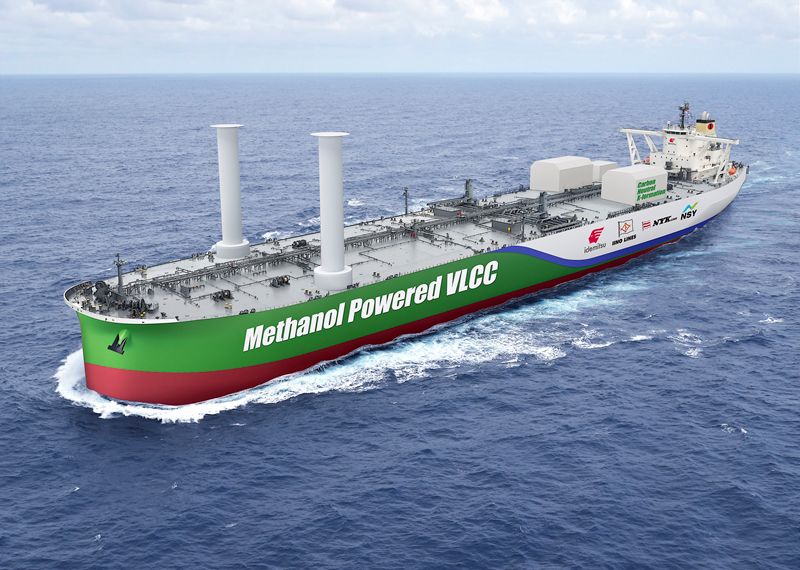Japanese Consortium Unveils Design For Eco-Friendly VLCC Powered By Methanol

Japan’s New Eco-Friendly Ship Design Promises Cleaner Shipping
Idemitsu Tanker, IINO Lines, NYK, and Nihon Shipyard have teamed up to create an eco-friendly oil carrier that aims to make ocean shipping cleaner. This large crude oil carrier, called a VLCC (Very Large Crude Carrier), is being designed to use methanol as a fuel instead of the usual heavy oil, making it Japan’s first Malacca Max-type VLCC with such a green approach.
These companies started planning this new type of ship on January 26, 2024, and have developed a concept design for it. Thanks to a dual-fuel engine, this special ship can use both methanol and heavy oil. This type of engine is flexible and allows the ship to switch between two kinds of fuel.
Cutting Down on CO2 Pollution
The ship will also have a “shaft generator.” This device produces power while the ship is moving, making it even more energy-efficient. Another option for the ship is a wind propulsion system, which uses the power of wind to move the ship, reducing fuel use and pollution further. Together, these features will help the ship produce much less CO2—over 40% less than many other ships today. This amount even goes beyond the tough CO2-cutting goals set by the Energy Efficiency Design Index (EEDI) for 2025, which requires ships to reduce CO2 by at least 30%.
Russian crude oil exports to India in August at lowest level since beginning of the year
Methanol, the main alternative fuel for this ship, is cleaner than conventional fuel oil. The International Maritime Organization (IMO) has a plan to cut down on greenhouse gases (GHG), and methanol can help reach these goals. Using methanol instead of regular oil could cut CO2 by about 15%. But when using green methanol, which is made from plants or hydrogen from renewable energy, emissions can drop to net-zero, making the ship even more eco-friendly.
Working Together for Cleaner Oceans by 2050
These four companies, which are leaders in Japan’s energy shipping, will continue to refine this design. Their goal is to help reach global shipping’s aim of becoming carbon-neutral by 2050. This target is part of an international effort to reduce pollution in shipping, which is one of the main ways goods are moved across the world.
The next step will be to plan the building of these eco-friendly VLCCs. Japan aims to start using these green ships soon, helping to reduce pollution while still supplying oil to its refineries.
